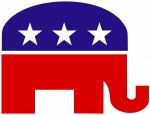Being Right: Breaking the Bank

The Federal Reserve’s (Fed) second round of quantitative easing (QE2) is supposed to “promote a stronger pace of economic recovery and to help ensure that inflation, over time, is at levels consistent with its mandate,” according to its released statement on December 14, 2010.
The Fed says that purchasing $600 billion worth of government bonds is intended to help lower long term interest rates, stimulate spending and decrease unemployment. It is also supposed to combat deflation and promote a healthy level of inflation.
My following three predictions are all based on the assumption that QE2 will be successful in achieving its goal to lower long term interest rates. Even this may be a stretch given the Fed’s track record.
QE2 will not increase consumer spending.
Consumers are currently hesitating to spend because of economic uncertainty and the lasting sting from the financial crisis, not because interest rates are too high. Lowering rates will do little to increase consumer spending.
QE2 will not revive the housing market.
Mortgage rates will likely fall an estimated 25-50 basis points and a trivial decline like this is unlikely to trigger another real estate boom.
Also, the Fed’s aim is misguided. Current rates are not the main reason people are hesitant to buy new homes.
The real reason is that there is still an excess of homes for sale in the market, which signals home prices will continue to decline. And while some homeowners may be able to refinance at a lower rate, many will not be able to because their homes are now worth less than the balance on their mortgage.
QE2 will not cause companies to invest.
The stockpile of cash that U.S. companies are sitting on is estimated to be over $1.5 trillion.
Hesitation to invest is due to the current economic uncertainty, not a restriction on the amount of capital they can access. A portion of this uncertainty is due to Obamacare, because, as Nancy Pelosi said, “we have to pass the bill so that you can find out what is in it.”
Business leaders are being very cautious because they are unable to see what is coming next in our age of regulation, uncertain costs and growing deficits. Reducing these uncertainties is the true way to increase company investment.
In essence, QE2 is another form of attempted stimulus. It aims to decrease unemployment and accelerate growth.
While forms of stimuli are not out of the ordinary for the current administration, this type is very different. QE2 is a last resort. The stimulus bill and traditional forms of lowering interest rates were the preferred methods to expand the economy and they failed to bring about a level of growth suitable for the Fed and Obama administration. After they tried all of their favored solutions, creating electronic dollars to buy our own debt is the only thing left.
Monetizing the debt is extremely risky and has proven to be horrifically destructive in countries like Germany and Zimbabwe.
Both countries expanded printing to pay for government spending which resulted in hyper-inflation.
Even though the Fed is not literally printing paper money, it is crediting electronic accounts which might as well be the same thing.
Relying on their last resort shows desperation and proves that the Keynesian philosophy of spending our way out has not, and will not, work.
After already throwing trillions of dollars at the problem, is the solution really to just keep spending more?
Once this last play from the book fails, maybe the Fed and the Obama administration will see how flawed their playbook really is.








